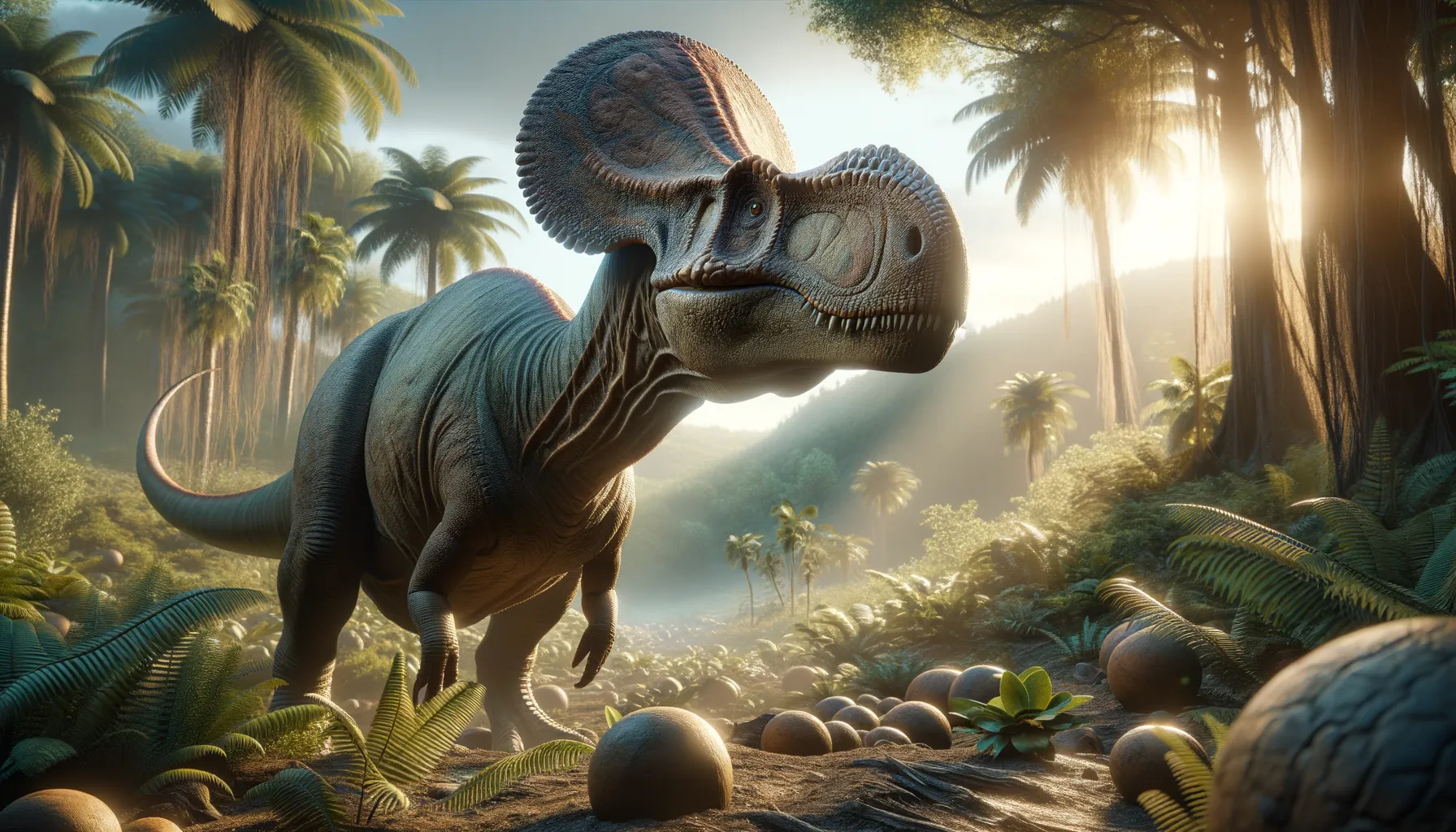
Pachycephalosaurus
Headstrong survivor from the Cretaceous era.
Period
Cretaceous
Length
Approximately 4.5 meters (15 feet) long.
Height
About 1.5 meters (5 feet) at the hips.
Weight
Roughly 400 to 500 kilograms (880 to 1,100 pounds).
Pachycephalosaurus, known for its thick, domed skull, was a herbivorous dinosaur that roamed North America during the Late Cretaceous period. Its most distinct feature was the rounded bone atop its head, leading to theories about head-butting behavior. This dinosaur was relatively small compared to some of its contemporaries but had sturdy, stocky limbs indicating it could move with surprising agility.
Diet
As a herbivore, Pachycephalosaurus likely fed on a variety of vegetation, including leaves, seeds, and fruits. Its teeth, though not particularly suited for grinding, suggest it could chew tougher plant materials.
Hunting
Unlike carnivorous dinosaurs, Pachycephalosaurus did not engage in hunting activities. Instead, it focused on foraging and browsing for plant matter, which composed the main part of its diet.
Environmental challenges
Living in a diverse ecosystem, Pachycephalosaurus faced challenges such as competition for food resources and predation by large theropods. Seasonal changes would affect the availability of vegetation, requiring adaptive foraging strategies. Additionally, terrain variability, from open plains to forested areas, influenced its mobility and feeding patterns.
Speed
Moderately fast, capable of quick bursts.
Lifespan
Estimated around 10 to 20 years.
First discovery
First discovered in Montana, USA in 1931.
Fun Facts
- Pachycephalosaurus is known for its thick, dome-shaped skull, which could be up to 10 inches thick.
- Its name means 'thick-headed lizard,' highlighting its unique skull structure.
- Scientists believe Pachycephalosaurus might have used its skull for head-butting, similar to modern-day rams.
- This dinosaur lived around 70 million years ago during the Late Cretaceous period.
- Fossils of Pachycephalosaurus have been found primarily in North America, especially in Montana and South Dakota.
- Despite its tough-looking dome, Pachycephalosaurus was a herbivore, dining on plants.
- It was a bipedal dinosaur, meaning it walked on two legs, similar to many other dinosaurs.
Growth and Development
Juveniles likely grew rapidly to reach adulthood and avoid predation by larger dinosaurs. The growth of its distinctive cranial dome is believed to have continued throughout its life, becoming more pronounced with age. Different growth stages might have played a role in identifying individuals within social hierarchies.
Habitat
Pachycephalosaurus inhabited a range of environments, from forests to coastal areas, within what is now North America. Its adaptability to various terrains suggests a wide ecological tolerance. The presence of lush vegetation provided ample food sources and protection from predators.
Interaction with other species
While not a predator itself, Pachycephalosaurus shared its habitat with various large carnivores and herbivores. Its dome-shaped skull may have been used in intraspecific interactions, possibly for defense or dominance displays. It likely lived in small groups or solitary, minimizing negative interactions with other species.
Natural lifespan
In the wild, Pachycephalosaurus might have lived up to two decades.
Reproduction
Reproduction likely involved laying eggs in nests, much like modern reptiles and birds. Parental care is speculative, but some attention to protecting or incubating eggs could have been present. Communal nesting sites may have offered additional security from predators.
Social behaviour
Social behavior is inferred from its physical features, with the likely use of the skull dome in social interactions, such as establishing dominance. It may have lived in small groups to aid in foraging and protection. Its behavior suggests some level of cooperation or social hierarchy.
Fossil locations
Fossils of Pachycephalosaurus have been primarily found in the Hell Creek Formation, which spans parts of Montana, Wyoming, and South Dakota in the United States. These discoveries give insight into its habitat, diet, and physical attributes by studying associated rock layers and fossilized plant remains.
